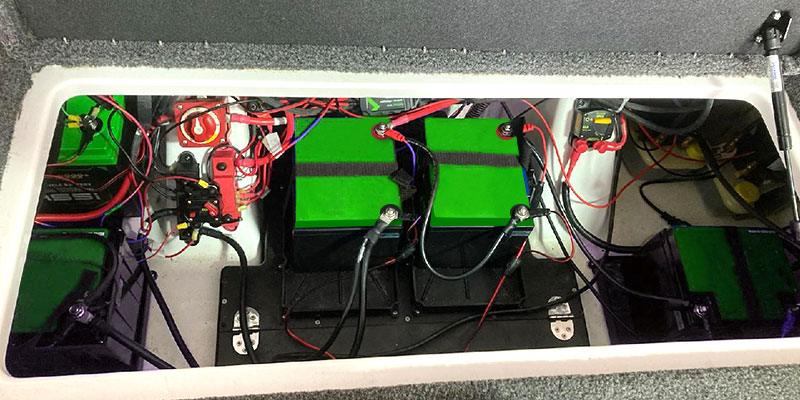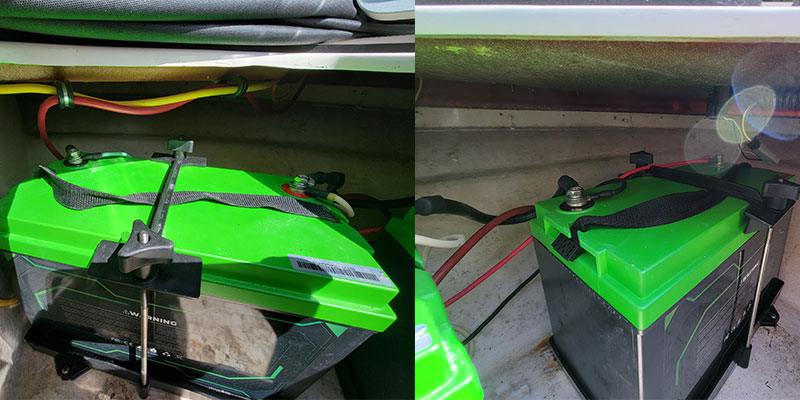How to charge a marine battery
Understanding Marine Battery Types and Their Requirements
Marine batteries are designed to meet the rigorous demands of marine environments, providing power for starting engines and running onboard electronics. Understanding the specifics of each type can guide the charging process to optimize battery life and performance.
- Starting Batteries:
- Purpose: Designed to deliver a large burst of power needed to start marine engines.
- Construction: Typically have thinner plates that provide high current for a short duration.
- Charging Needs: These batteries benefit from a fast recharge rate to quickly restore capacity, but care must be taken to avoid overcharging, which can reduce their lifespan.
- Deep Cycle Batteries:
- Purpose: Built to provide steady power output over a longer period for electronics and electric motors.
- Construction: Feature thicker plates that can withstand frequent charging and discharging cycles.
- Charging Needs: Require a more controlled and slower charging process to ensure full energy restoration without stressing the battery, often utilizing a three-phase charging method that includes bulk, absorption, and float stages.
- Dual-Purpose Batteries:
- Purpose: Serve the combined needs of starting and energy storage.
- Construction: A hybrid between starting and deep cycle batteries, with plate designs that accommodate both quick energy bursts and prolonged discharges.
- Charging Needs: Charging these batteries involves managing a balance between adequate power restoration for engine starts and maintaining deep cycle capabilities, making smart chargers particularly useful.
Selecting the Right Charger for Marine Batteries
Choosing the appropriate charger is crucial for maintaining battery health and ensuring safety. Each type of charger offers different benefits and is suited to particular marine battery types.
- Standard Lead-Acid Chargers:
- Features: These chargers provide a constant current or constant voltage but do not automatically adjust based on the battery’s state of charge.
- Limitations: May lead to overcharging or undercharging if not carefully monitored, especially detrimental to deep cycle and dual-purpose batteries.
- Smart Chargers:
- Features: Automatically adjust the charge rate based on the battery’s condition and typically offer multiple charging modes to precisely cater to the specific needs of starting, deep cycle, and dual-purpose batteries.
- Benefits: Prevent overcharging, extend battery life, and are ideal for managing batteries that aren’t used regularly, as they can maintain the battery at optimal charge without supervision.
- Solar Chargers:
- Features: Use solar energy to charge batteries, making them an eco-friendly option for boats that are away from conventional power sources.
- Benefits: Provide a steady trickle of energy, ideal for maintaining a full charge and extending battery life. They are particularly useful in sunny climates and where docking locations lack electrical hookups.

Detailed Steps for the Charging Process
Charging a marine battery properly involves several critical steps to ensure safety and maximize battery efficiency:
- Safety and Preparation:
- Before connecting the charger, ensure the area is well-ventilated to preventhydrogen buildup due to overcharging. Check the battery case for any signs of damage such as cracks or bulging, which can indicate a failed battery.
- Connecting the Charger:
- Attach the charger’s positive clamp to the battery’s positive terminal and the negative clamp to the negative terminal. This order helps to reduce the risk of sparking.
- Setting the Charger:
- Adjust the charger settings according to the type of battery and its specific needs. For example, deep cycle batteries require a lower charging rate to fill slowly, whereas starting batteries can handle higher rates.
- Monitoring the Charging Process:
- Keep an eye on the progress. Smart chargers will display the charging status and alert you when the battery is fully charged. For manual chargers, use a voltmeter to check the voltage levels to avoid overcharging.
- Post-Charging Checks and Maintenance:
- Once charging is complete, disconnect the charger and check the battery for warmth. Check the voltage of the battery with a multimeter is for full voltage.
Post-Charging Maintenance and Troubleshooting Common Issues
Maintaining your marine battery after charging is crucial for ensuring it continues to perform optimally and extends its lifespan. Here’s how you can effectively manage your marine battery post-charge:
Post-Charging Maintenance
- Regular Checks for Optimal Performance:
- Visual Inspection: Regularly inspect the battery for any signs of damage or wear, such as cracks, leaks, or bulging. These symptoms can indicate structural failure or internal problems.
- Terminal Maintenance: Clean the terminals regularly to prevent corrosion, which can impede the flow of electricity. Use a wire brush and apply a corrosion-resistant spray to protect the terminals.
- Storage Conditions:
- Proper Storage: If the 12V battery is stored for long periods of time, it is recommended to keep the battery voltage between 12.8V-13.4V and ideally to charge and discharge the battery once every three (3) months.
Troubleshooting Common Charging Issues
Even with the best care, you might encounter issues during the charging process. Here are common problems and how to troubleshoot them:
- Battery Does Not Hold Charge:
- Possible Causes: Age, deep discharge damage, or internal faults such as a shorted cell.
- Solution: Test the battery using a load tester to check its capacity. If it fails the test, it may need to be replaced.
- Battery Overheats During Charging:
- Possible Causes: Overcharging, excessive current, or ambient temperature too high.
- Solution: Ensure the charger is set to the correct settings and reduce the charging rate. Check the environment to make sure it’s not contributing to overheating.
- Corrosion on Terminals:
- Possible Causes: Electrolyte leakage or hydrogen gas emission.
- Solution: Clean the terminals and apply a corrosion inhibitor. Check that the battery caps are secure and the battery case is not cracked.

Himax Electronics Advantages in Marine Battery Care
Choosing Himax Electronics for your marine battery solutions provides numerous benefits:
- High-Quality Chargers: Himax offers a range of smart chargers that are ideal for marine batteries, featuring automatic adjustment of charging rates, multi-stage charging, and temperature compensation to optimize battery life and performance.
- Technical Support and Warranty: Himax provides comprehensive customer support, offering advice on battery maintenance and troubleshooting, backed by robust warranties that assure quality and reliability.
- Innovative Products: Himax stays at the forefront of battery technology, regularly introducing innovative products that meet the evolving needs of maritime and automotive applications. This includes batteries with higher efficiency, longer life spans, and advanced safety features.
Conclusion
Proper charging and maintenance of your marine battery are critical to ensuring its longevity and optimal performance. By following the detailed steps and guidelines provided, and utilizing products and support from Himax Electronics, you can maximize the efficacy and lifespan of your marine batteries, ensuring they continue to perform reliably whether at sea or on the road.
Would you like further details on any specific product from Himax Electronics or additional guidance on setting up a maintenance schedule for your marine batteries?



